This is Lithuanian's Christmas decorations in our city Klaipėda and inour capital Vilnius.
Christmas in Italy
Christmas Presents - " Regali di Natale "
Most Italians open their presents on Christmas day morning or after lunch, although some wait until Epiphany, " Epifania" ,on January 6th.
It's traditional for children to receive a stockings , " la calza" ,colourful long socks full of sweets, " I dolciumi" , if they've been good, but they're filled with coal "carbone" ,which is made of black sugar, if they've been bad.Traditionally, it's not Santa Claus but the kind witch , La befana, who brings sweets. Nowadays 90% of italian children believe in Santa Claus or father Christmas , " Babbo Natale".
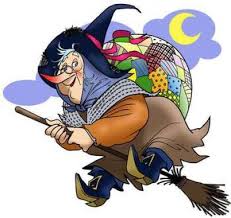 La Befana
La Befana  La Calza
La Calza
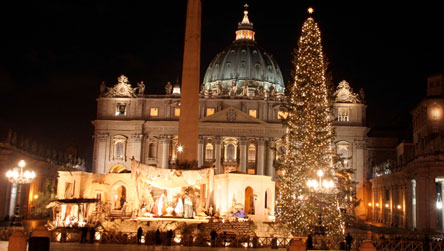 St Peter Square / Rome
St Peter Square / Rome
Food and drinks
The essence of Christmas Day in Italy is Family, love and food . Italian festive food varies from region to region, although there are some common dishes . Christmas Eve is a day of abstinence from meat so fish dishes are popular. Lunch , on Christmas day , is the most important of all the Christmas feasts. Tortellini, Lasagna, Lamb, are the most popular dishes.
The main traditional cake is Pandoro , but Torrone and Panettone are popular .
Pandoro Panettone Spaghetti
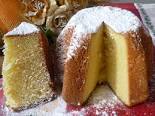
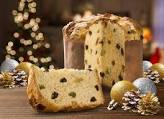
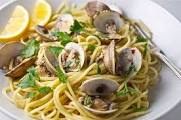
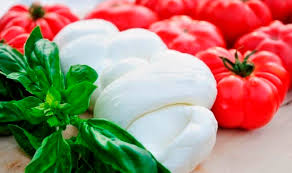 Mozzarella
Mozzarella 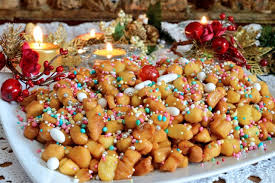 struffoli
struffoli

New Year and Christmas traditions in Ukraine

New Year and especially Christmas are most popular and most beloved holidays in Ukraine. Both have a long history and a special set of traditions and rituals, all of which allow to explore a unique Ukrainian cultural identity that miraculously survived on the outskirts of modern Europe.
New Year’s Day, January the 1st, is a national public holiday in Ukraine. It marks the start of the year in the Gregorian calendar. It is time when many Ukrainians decorate their Christmas tree and buy presents to give to one another. In Western Ukraine St. Nicholas day (December 19th) is the time when children get their presents from St. Nicholas (or so their parents let them believe). However, in the rest of the country New Year is the day for giving presents to kids, family and friends.
 Ukrainians like to celebrate New Year’s Eve with friends and family. And in spite of freezing temperatures, they often toast the New Year outdoors. Midnight, New Year’s Eve in the center of the biggest Ukrainian cities is quite an endearing sight: people standing outside, – just to wish each other a happy new year, accompanied by the bang and sparkle of fireworks.
Ukrainians like to celebrate New Year’s Eve with friends and family. And in spite of freezing temperatures, they often toast the New Year outdoors. Midnight, New Year’s Eve in the center of the biggest Ukrainian cities is quite an endearing sight: people standing outside, – just to wish each other a happy new year, accompanied by the bang and sparkle of fireworks.
 Those who stay at home, often listen to presidential speech broadcasted on all national TV channels just before midnight. People gather together by the festive table with gourmet dishes and champagne. At midnight they raise a toast to drink to the New Year and congratulate each other.
Those who stay at home, often listen to presidential speech broadcasted on all national TV channels just before midnight. People gather together by the festive table with gourmet dishes and champagne. At midnight they raise a toast to drink to the New Year and congratulate each other.
New Year’s Day is a national holiday in Ukraine. Schools, banks and public offices are closed. If a holiday falls on a weekend, the Monday after the weekend is a day off for many people.
 Christmas Day is celebrated either on December 25 in accordance with the Roman Catholic tradition (Gregorian Calendar), or on January 7 which is traditionally the Orthodox or Eastern Rite (Julian Calendar) church holy day.
Christmas Day is celebrated either on December 25 in accordance with the Roman Catholic tradition (Gregorian Calendar), or on January 7 which is traditionally the Orthodox or Eastern Rite (Julian Calendar) church holy day.
The Christmas Eve Supper or Sviata Vecheria (Holy Supper) brings the family together to partake in special foods and begin the holiday with many customs and traditions, which reach back to antiquity. The rituals of the Christmas Eve are dedicated to God, to the welfare of the family, and to the remembrance of the ancestors.
 Orthodox and Roman Catholic Christians in Ukraine traditionally have 2 Christmas dinners. The first one is a Lent Dinner, it is held on the January 6 and should consist of meatless dishes. You can't start eating the meal until the first star is seen in the sky. The second one is a Christmas Festive dinner held on January 7, when the meat dishes and alcohol are already allowed on the table.
Orthodox and Roman Catholic Christians in Ukraine traditionally have 2 Christmas dinners. The first one is a Lent Dinner, it is held on the January 6 and should consist of meatless dishes. You can't start eating the meal until the first star is seen in the sky. The second one is a Christmas Festive dinner held on January 7, when the meat dishes and alcohol are already allowed on the table.
The dinner normally has 12 dishes which represent Jesus's 12 disciples. However, even for Christmas, Ukrainians manage to bring in so many ancient rituals, that at times the line between the religious and the pagan becomes quite blurry. Both Christmas dinners traditionally include a number of authentic Ukrainian dishes, which have over thousand year history and date back to pagan times.

Kutya, being single most important Christmas dish in Ukraine, was known as a popular ritualistic food even before the arrival of Christianity. This is a cooked wheat porridge, mixed with poppy seeds, honey, and raisins. It symbolizes wealth and appreciates for successful harvest season.
Another pre-Christian detail of traditional Ukrainian Christmas dinner is Didukh. The room where Christmas dinner is eaten normally has a Didukh decoration placed in it. The Didukh is made from a sheaf of wheat and it symbolizes the large wheat field in Ukraine. It literally means 'grandfather spirit' and can represent people's ancestors being with them in their memories. These days modern Ukrainian families just put some heads of wheat in a vase rather than a whole sheaf of wheat.

After Christmas Dinner many children as well as grown-ups go visit their neighbors and family members and friends who live nearby to wish them Merry Christmas and sing some Christmas carols. The custom of caroling is joyful and merry. Ukrainian Christmas songs or carols have their origins in antiquity, as do many other traditions practiced at Christmas time. One more fun Christmas tradition in Ukraine is Vertep. Vertep, the Ukrainian Christmas puppet theater, is a group of people going from house to house with short Biblical themed scenes and carol singing. After seeing the performance, the host traditionally gives money or food to Vertep.